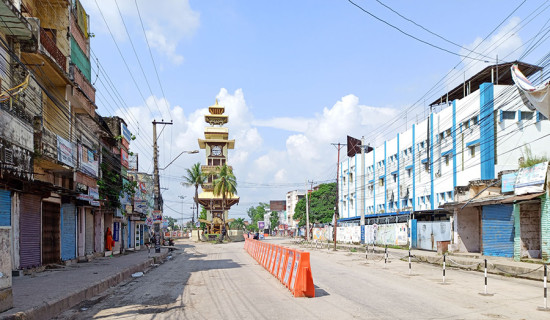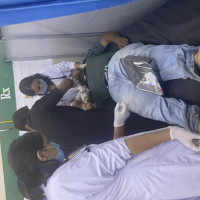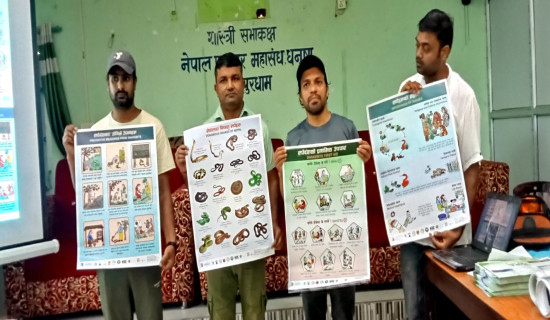- Tuesday, 9 September 2025
Children's Mental Health
When a child is struggling to keep up at school, has no interest in activities with others, or refuses to get out of bed in the morning, the most common things they are labelled as are “lazy”, “weak”, or “disobedient”. Both parents and teachers often don't consider the possibility that the child is struggling with actual psychosocial challenges. The belief that “children can't be depressed” or “what's a child got to worry about?” is still firmly rooted in our culture. The truth, however, is that children's mental health is just as real and just as vulnerable as an adult's. Globally, psychosocial problems affect 10–20 per cent of children and adolescents, with half beginning by age 14 and most going unnoticed and untreated.
In Nepal, a 2018 report shows the severity of psychosocial problems among children. About 12.9 per cent of children are affected with internalising issues such as anxiety, depression, and withdrawal, present in 44.6 per cent of cases. Likewise, 25.8 per cent suffer from Attention Deficit Hyperactivity Disorder (ADHD), and externalising problems such as aggression and rule-breaking are present in 4.2 per cent. In a study conducted in Hetauda, 17.03 per cent of the 134 children were found to have significant psychosocial problems. These figures underscore that child mental health is no marginal issue; it is a prevalent concern that must be addressed immediately.
Part of the problem is cultural attitudes. Children are seen as extensions of the family honour rather than individuals with inner lives of their own. When a child's grades slip or they lose interest in school, parents are more worried about shame than about the welfare of the child. Teachers may label students as inattentive or sluggish instead of asking why they are struggling. This cycle of dismissal not only delays help but also teaches children that their feelings are not reasonable. If left unaddressed, withdrawal, anxiety, and irritability can evolve into self-harm, severe depression, and even suicidal thoughts. Fortunately, these outcomes are often preventable with compassion, early intervention, and open talk.
Another challenge is recognition that adults rarely know the signs of mental illness in children. Symptoms do not always appear as sadness and crying; they can also show up as irritability, lethargy, poor concentration, or even physical complaints like headaches and stomachaches. If unrecognised, adults are prone to misinterpret the signals as bad behaviour or an unnecessary tantrum. Nepal's school system adds to this issue. Schools' biggest concerns are exams and discipline, and there is limited to no space for mental health education or school counselling services.
For the majority of students, especially in rural areas, there is no professional school counsellor to approach. In such an environment, children who aren't able to keep up with the academic demands fall behind both emotionally and academically. The solution begins with changing the way adults listen to children. Parents and teachers must be willing to take a child's emotional pain as seriously as physical illness. They should know that mental illness is an actual, diagnosable problem that requires attention, care, and evidence-based treatments.
Integrating mental health education into school curricula, training adults to identify and respond to early warning signs, and creating safe spaces for kids to speak without fear of punishment or ridicule are crucial. Children aren't “too young” to feel real emotional hurt; they're just too young to have to do it alone. Hearing them out, validating them, and supporting them fosters not only immediate relief but also a healthier, stronger generation.

















